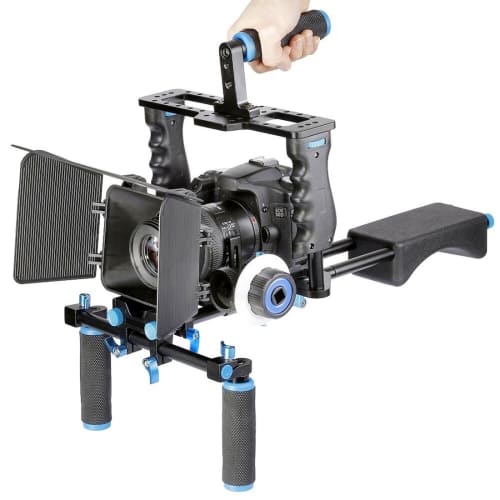Capture the Moment: The Essential Guide to Camera Tripods Leave a comment
In the dynamic world of photography, the ability to capture a perfect moment often hinges on the steadiness of your camera. While handheld shots can be thrilling in some situations, there are instances where the magic lies in the stillness of a well-supported camera. This is where the unsung hero of photography comes into play—the camera tripod. In this comprehensive guide, we will explore why a tripod is an indispensable tool for photographers and how to choose the perfect one for your needs.
The Foundation of Stability
At its core, a camera tripod is a three-legged stand designed to support and stabilize your camera. Whether you’re shooting landscapes, portraits, or long-exposure shots, the stability provided by a tripod is unmatched. It eliminates the risk of shaky hands, ensuring crisp and clear images, especially in low-light conditions.
The stability offered by a tripod extends beyond just preventing camera shake. It opens up new possibilities for creativity by allowing you to use slower shutter speeds without compromising image quality. This is particularly beneficial in scenarios where you want to capture the flow of a waterfall or the streaks of light in a night sky.
Types of Camera Tripods
Not all tripods are created equal, and choosing the right one depends on your specific needs and preferences. Here are the main types of camera tripods:
- Compact Tripods: Ideal for on-the-go photographers, these tripods are lightweight and easy to carry. While they may not reach the height of larger tripods, they offer excellent portability.
- Travel Tripods: A step up from compact tripods, travel tripods are designed for photographers who need a balance between portability and stability. They often come with features like adjustable legs and foldable designs.
- Studio Tripods: If you’re a studio photographer looking for maximum stability, studio tripods are heavy-duty options that can handle the weight of professional cameras and accessories. They are less portable but provide unmatched stability.
- Carbon Fiber Tripods: Known for their durability and lightweight construction, carbon fiber tripods are a popular choice among photographers who need both stability and portability. They are resistant to temperature changes and absorb vibrations effectively.
- Aluminum Tripods: A more budget-friendly option compared to carbon fiber, aluminum tripods are sturdy and provide good stability. They are a suitable choice for amateur photographers or those on a tight budget.
Key Features to Consider
When shopping for a camera tripod, it’s essential to consider various features to ensure it meets your specific requirements. Here are some key features to keep in mind:
- Height: Consider the maximum and minimum height of the tripod to ensure it suits your shooting style. Adjustable legs and center columns can provide additional flexibility.
- Weight Capacity: Different tripods have different weight capacities. Make sure your chosen tripod can support the weight of your camera and any additional accessories you plan to use.
- Leg Locks: Tripods typically have twist locks or flip locks on their legs. Choose the type you find most convenient and easy to use.
- Head Type: The tripod head determines the range of motion your camera will have. Common types include ball heads, pan-and-tilt heads, and three-way heads. Choose the one that aligns with your shooting preferences.
- Material: Tripods are commonly made from aluminum or carbon fiber. While aluminum is more affordable, carbon fiber is lighter and more resistant to vibrations.
- Portability: If you’re an on-the-go photographer, consider the folded length and weight of the tripod. Compact and travel tripods are designed with portability in mind.
Investment in Quality
A camera tripod is an investment in the quality of your photography. While it may be tempting to opt for the cheapest option available, a subpar tripod can lead to frustration and missed opportunities. Consider it as a long-term investment that contributes to the overall success of your photographic endeavors.
Look for reputable brands with positive reviews, and don’t hesitate to spend a bit more for added durability and features. A high-quality tripod can last for years, providing a stable platform for countless breathtaking shots.
Conclusion: Elevating Your Photography
In the world of photography, where every moment is fleeting and every detail matters, a camera tripod emerges as an indispensable tool. It is more than just a stand; it is the foundation of stability that allows photographers to unleash their creativity without the constraints of shaky hands or limited exposure settings.
As you embark on your journey to find the perfect camera tripod, consider your specific needs, shooting style, and budget. Whether you’re a seasoned professional or an amateur enthusiast, investing in a quality tripod is a decision that will undoubtedly elevate the quality of your photography, enabling you to capture the moments that matter most with precision and clarity. So, embrace the stability, unlock new possibilities, and let your camera tripod be the silent yet essential companion in your photographic adventures.


